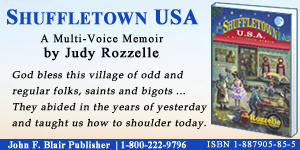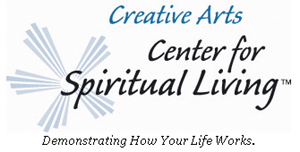Some of my most cherished memories are of visits with Cousin Phyllis; the nights I slipped away to her house for unscheduled visits.
About once a month, when I felt the need to aside good sense, I would visit Cousin Phyllis with the intent of leading her astray knowing she would be an eager participant. I would jump in my car and drive the short distance to her house. I rarely dressed for the occasion; I threw my red robe over my purple pajamas and slipped my feet into my pink fuzzy bedroom shoes. Sometimes, I would call, sometimes, I wouldn’t bother.
Since I was the visitor not the visited, it was my responsibility to bring a pack of Merit cigarettes and a jug of wine which I purchased at the 24/7 convenience store in the east corner of Shuffletown crossroads. The clerk was usually Fred.
Fred was an affable man who collected stamps. His choice of clothes was always the same: a leather vest over a well-worn cowboy shirt, a string tie and his pipe always hung from a corner of his mouth. Any purchase required a short conversation with Fred, who was never uptight or rushed. He was there to talk and make change. He never seemed to notice that I stood before him dressed like a Clarabelle.
Once back in the car, I drove 500 feet down Mt. Holly Huntersville Road turned left onto Uncle Johnny’s long gravel driveway and turned right onto Phyllis’s driveway. Sometimes, in my enthusiasm, I brought my car to a stop too close by the apple tree Phyllis had planted the day she moved into her home.
When this happened, I would climb over the “PRNDL” (the thing that says, P for park, R for Reverse, D for drive, etc. etc.) and crawl out the right car door.
I would walk across her back yard, stomp across her wooden porch floor and knock on the door. Always, always, Phyllis would be talking on her custom telephone, a white and gold Victorian design. She would continue talking on the phone when she walked across the room, unlocked the door, waved and continued talking on her custom telephone was a copy of a white and gold Victorian era telephone. She wore a burnt orange polyester robe. I closed the door leaving the world and its worries outside.
I then began my routine of activity which never failed in bringing her conversation to a sudden end. First, I would sit on the floor in front of the carved chest she called a coffee table and flip through the pages of her magazines, read her personal notes, and when I finished I did not bother to rearrange the books and magazines. Phyllis would lean forward frown at me and straight up my mess without dropping an adverb in her conversation.
I began to move about the room. From her perch in a corner of the couch, her eyes followed my every move.
I sat down in her favorite antique chair. It was unsteady and terribly uncomfortable. I saw there as long as humanely possible and then, I would move to the green chair on the other side of the room. On the way, I would examine the nick knacks on her fireplace. I quickly moved from the green chair to the kitchen. I opened the door to her refrigerator and began to rumble through its contents.
“Can I eat this last piece of pie,” I called.
She said goodbye and slammed down the phone as if a rocket had gone off in her nightgown. Like an enraged bantam hen, she marched in my direction. When she reached the refrigerator, she would push me aside, “Get back. Let me in there, I will find you something to eat.”
Shortly, I would carry my piece of pie to the living room. Phyllis filled two wine glasses filled with ice and retrieved an ashtray from a drawer.
I unscrewed the wine and poured each glass to the brim. Then I sat back and waited…
To observe Phyllis opening a pack of cigarettes was to watch a ritual. Slowly, reverently, she would unwrap the cigarette pack. The wine chilled in the glass as Phyllis tapped the end of the pack on the coffee table. Then she flipped out the paper string with her fingernail and slowly pulled it from cellophane wrapper. The final act was to carefully unfold the tin foil so that it could be neatly re-folded. Finally, she tapped a finger against the pack until one cigarette slide free. .
She withdrew the cigarette and placed it loosely between her lips. Then she would reach for the matches. Phyllis was ever alert to the dangers involved in the lighting a cigarette. To avoid burning her face, she pursed her lips mouth and held the cigarette at far as possible from her face. She held the match book away from her body and stuck the match quickly, but hesitantly. While puffing to light the cigarette, she squinted her eyes and tilted her head away from the flame. Phyllis had not been a child who played with fire. As she exhaled the smoke, out of the corner of her mouth she would ask, “What the #^& have you been up to, Cousin.”
For the majority of our lives, Cousin Phyllis and I were pitched enemies, but as we aged we began to realize that blood was thicker than popularity and we had grown weary of marriage and divorce. Our unscheduled visits were to celebrate kinship. In the next couple of hours, we became ourselves. We exchanged stories, matched wits on jokes, told tales of gossip, and, of course, men.
Before cell phones and emails, Southerners spent their free time visiting folks. It was an honorable act, a neighborly act, which left the “Visitor,” and the “Visited” feeling better. Also, it was not so long ago when church attendance and visiting were the only acceptable Sunday activities.
In the 1940s and 1950s, if a visitor stopped by and no one was at home, a note pad hung by the front door of Southern homes. The friendly cheerful note pads were popular tourist items as were carved cedar boxes and chenille bedspreads decorated with peacocks and chickens.
Often, the notepads were painted with scenes of popular vacation destinations: Chimney Rock, Great Smokey Mountains, Myrtle Beach, and Lake Lure. The note pads were about the size of the slim outdoor thermometer that hung by the back door. Each note pad included a small place for stationery and a pencil was tied to it by a string.
The most important visits were to grandparents who still lived in the old home place. It was an act of kindness, visiting the elders, visiting neighbors, cousins, brothers and sisters. We were all better for it.
Today, unlike yesterday, miles often separate generations of family. Our time-saving modern inventions and instant dinners leave us little time to sit a while with a friend.
When I lived in Florida with my family, each visit home included a visit to the homes of Uncle Houston and Aunt Catherine, Aunt Nancy and Uncle Willis, Uncle Johnny and Aunt Mutt, Uncle Ed and Aunt Alma, and assorted cousins, plus a Sunday afternoon in Lincolnton visiting with Mama’s family.
Little is left of what once was our way of life. Change upon change has swept away the old to make room for the new. The rhythms of life are set on warp speed and time passes so quickly it is as if it was being chased. Yet, there are signs that the tradition of visiting folks is not lost. It has only adapted to speed and distance.
We still visit back and forth to “pay our respects.”
In the last decade of the past century, my visits to pay my respects were limited to Aunt Mutt, Aunt Nancy and Uncle Willis. They were the last survivors of our parents’ generation.
One Sunday afternoon, Aunt Nancy anointed me as her regularly expected Sunday visitor. I was to arrive between 5:30 pm and to depart when her game show came on. Or if she tired of me sooner; she would wave her hand and say goodnight to me. Often, she did this when I was in mid-sentence.
Now, I pay my respects by walking past the graves in the family plot, in the cemetery behind Cook’s Memorial Church.
There are not a lot of my relatives left in these parts and those who are left still visit each other. Cousin Anne and I check in on each other by phone and occasional afternoon visits. Cousin Anne’s backyard is my dog Sassy’s favorite place to visit. It is filled with squirrels and cats to chase. When we are together we discuss our ailments; kids; and pets and always, the weather, the same topics our parents once talked about.
These visits are assurances that the family tie is still there. I miss my sister, Jill, who moved to the mountains, but we talk daily and visit as often as our schedules allow.
Families stay in touch. The Paul Thompson family issues an annual directory of family members and their contact information. Even among the constant changes that we see happening every day; families, cousins, nephews, nieces, in-laws, sisters and brothers are creating new ways and weaving new patterns that will keep families in touch. Neighbors still visit back and forth in my small community.
Yet, I still miss the free-form visits with Cousin Phyllis. But then about four months ago, around 9:30 p.m. on a Friday night, my door bell rang. When I opened the door, my visitors were Teena, Phyllis’s daughter, and her husband, Whitey. They had come to visit to pay their version of respect to an elder.
They stood there grinning like mischievous kids.
“Cousin Judy,” Whitey asked, “is that one of Mutt’s old Muumuus you have on?”
“What the &*% you doing?” Teena will ask.
“I’ll open a bottle of wine,” I volunteer. Then we sit to visit; to laugh gossip, swap exaggerations and downright fibs. During the visit I always begin to feel the need for a red robe and purple pajamas.
Their visits have become pretty regular now. Their visits are a treat. I have appointed Teena and Whitey my Friday night visitors and they go home when I tell them to. Sometimes, they go home all too soon. I trust they call on me to pay respects to an elderly cousin, but they insist they visit to make sure I am not wandering around the house wearing one of Aunt Mutt’s muumuus and carrying a cat.
The way we live has changed, the farms are gone, but families and neighbors will always visit. This is how we build friendship and understanding. It is a way to strengthen our ties to the area and provides us with a sense of place and belonging. The circle keeps expanding and transitioning. Southerners love to visit.
As a summer day draws to an end in my neighborhood, I look forward sitting a spell with my neighbors. Instead of children, we bring our dogs to the gathering. As day becomes night, we discuss the weather, our ailments, while watching our dogs aggravate each other: Sassy and Jipper growl at Sherry and Kevin’s 80 pound Golden Retriever puppy, Cooper, who is under the impression that my ten pound dogs are Mexican piñatas.
Shannon holds her dog, Sassy, and even with a broken-elbow Tammy keeps her dog, Gabby, from entering the fray. Eight year old, Madison goes from person to person petting each dog. It is our way of being. It is our way of visiting at the hearth of our community to share life and living.


